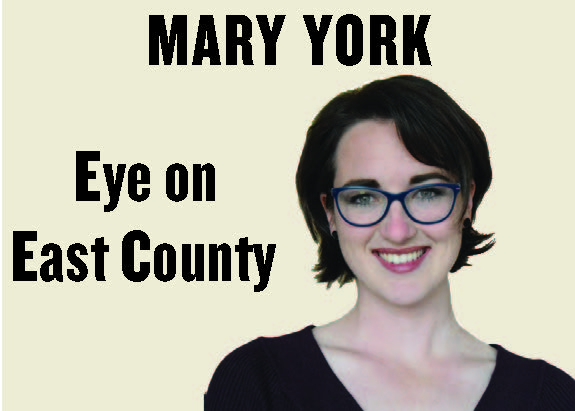I was in ninth grade when I first saw the Tomb of the Unknown Soldier. On a drizzly day in early April, I stood in sacred silence and gazed upon a resting place that symbolized with hope a peace that we wish upon our fallen.
The Tomb is fascinating, as are the rituals that surround it. It has been guarded 24 hours a day since 1937. The sentinels chosen to guard the tomb follow a strict regimen both on and off duty, from behavior to uniform preparation, to ensure the tomb is not disrespected.
I was in ninth grade when I first saw the Tomb of the Unknown Soldier. On a drizzly day in early April, I stood in sacred silence and gazed upon a resting place that symbolized with hope a peace that we wish upon our fallen.
The Tomb is fascinating, as are the rituals that surround it. It has been guarded 24 hours a day since 1937. The sentinels chosen to guard the tomb follow a strict regimen both on and off duty, from behavior to uniform preparation, to ensure the tomb is not disrespected.
Such care for those who made the greatest sacrifice for our country and for the memory of those whose remains were never found ranks among the highest displays of both American romanticism and patriotism.
But those efforts fall flat and hollow in the face of how our living service members are treated by this same country.
Last year, Time Magazine reported that there were more than 39,000 homeless veterans in the United States, and the United States Department of Veteran Affairs reports that 45 percent of homeless veterans suffer from some kind of mental illness.
Homelessness makes veterans even more susceptible to Post Traumatic Stress Disorder. Between 11 and 20 percent of homeless Iraq and Afghanistan veterans are thought to have PTSD.
East County has a large veteran population: nearly ten percent of residents.
But homelessness, though one of the more dominant conversations regarding veterans, is not the only issue they face.
Santee native Karolyn Smith recounted her own experiences as a veteran after publishing a book entitled, “Sofia the Bionic Cat,” a heartwarming survival story and children’s book.
Smith said she found it difficult to return home after nearly a decade serving abroad in various capacities. She describes how the survival habits she adopted in warzones had no place back in the States, leading to her feel paranoid and increasingly isolated. Coupled with chronic pain that no one else seemed to feel urgently pressed to treat, Smith said she began to understand why so many veterans take their own lives.
To survive years of conflict only to be killed by the apathy of the people you fought to protect is a condemning legacy for the American people.
It is not intentional, of course. Most Americans, I would venture a guess, are not fully aware of the scope of many of these problems. Most would not recognize a homeless veteran from a homeless non-veteran, making the problem virtually invisible to the community. And mental illness is a complex issue that we still have much to learn about and understand.
This, of course, is reflective of perhaps the need for a large-scale change on how the community treats the homeless persons and those with mental illness in their neighborhoods to begin with – veteran or not.
But perhaps if more people were aware of the needs veterans are facing, they would feel a greater urgency to step up and lend a hand.
Many Americans have never personally felt culture shock. They have not found themselves strangers in their own homes. Thankfully, many have never had to live through truly traumatic experiences. Most of us – thanks to our veterans – have, for the most part, enjoyed calm, stable, peaceful lives.
And while that is a gift and a privilege, it makes our communities uniquely ill-equipped to help our troops as they find themselves homeward bound.
How do we fix this?
As Atticus Finch would say, you never really know a man till you step in his shoes and walk around a while.
We need to be more proactive in embracing the veterans in our communities. And I do not mean in “official capacity.” Of course, there are programs in place to help these men and women. But how many of them know about the benefits available to them? How many actually have shoulders to lean on as they try to navigate their way back into civilian life, steering them in the right direction and offering them support, encouragement and friendship?
These men and women serve in brotherhood while in uniform. How difficult it must be to come home and find oneself seemingly alone.
Our government could do better for veterans, yes. Our communities can do even more. But it means changing the way we approach the issue. We need neighborhood eyes. Who lives down the street from us? Who do we pass in the grocery store? Who lives around us who might need our help? And how can we possibly know unless we put down our phones or step outside our busy life schedule and take a moment to meet the people in our community?
We cannot petition local, state and federal leaders to make the changes we can make ourselves.
If we make an effort to reach out to the veterans in our own neighborhoods, as individuals and not simply as local government acting on behalf of a vaguely concerned citizenry, far fewer men and women will slip through the cracks of the system.
The Tomb of the Unknown Soldier is meant to honor the sacrifices of fallen servicemen and women who were never given a proper resting place. But there are known servicemen and women all around us looking for rest and peace and the chance to start life again.
Let us guard their futures as devotedly as we have guarded the memory of the Unknown.














I think this is among the
I think this is among the most significant info for me.
And i’m glad reading your article. But should remark
on few general things, The site style is great, the articles is really excellent
: D. Good job, cheers http://s.th3kevmaster74.de/wrinklecouturecream121158
I think this is among the
I think this is among the most significant info for me. And i’m glad reading your article.
But should remark on few general things, The site style is great, the articles is really excellent : D.
Good job, cheers http://s.th3kevmaster74.de/wrinklecouturecream121158
Hello to all, how is all, I
Hello to all, how is all, I think every one is getting more from this website, and your
views are pleasant for new viewers. https://www.mermaidwiki.com/index.php/Why_Exercising_Along_With_Changing_Can_Make_Will_Have_A_Person_Well
Hello to all, how is all, I
Hello to all, how is all, I think every one is getting more from this website, and
your views are pleasant for new viewers. https://www.mermaidwiki.com/index.php/Why_Exercising_Along_With_Changing_Can_Make_Will_Have_A_Person_Well
If you wish for to grow your
If you wish for to grow your knowledge only keep visiting this web
site and be updated with the most recent news update posted here. http://nobodysproperty.com/wiki/index.php?title=User:DoyleReedy4
If you wish for to grow your
If you wish for to grow your knowledge only keep visiting
this web site and be updated with the most
recent news update posted here. http://nobodysproperty.com/wiki/index.php?title=User:DoyleReedy4